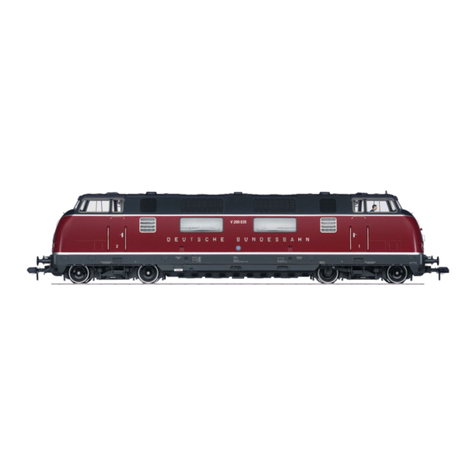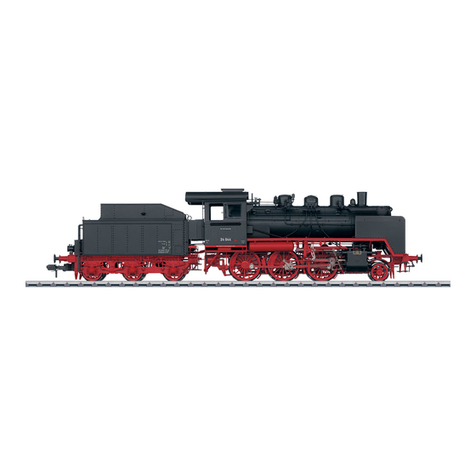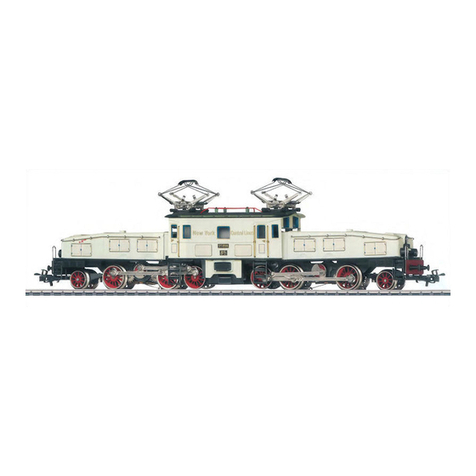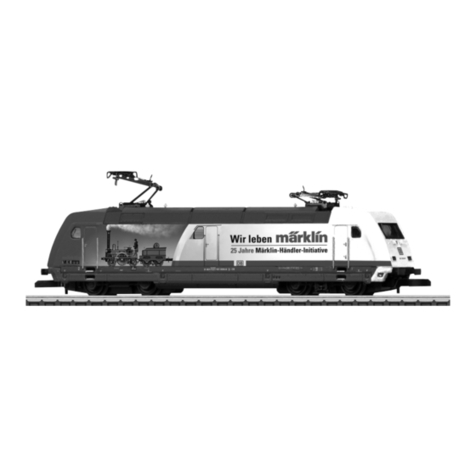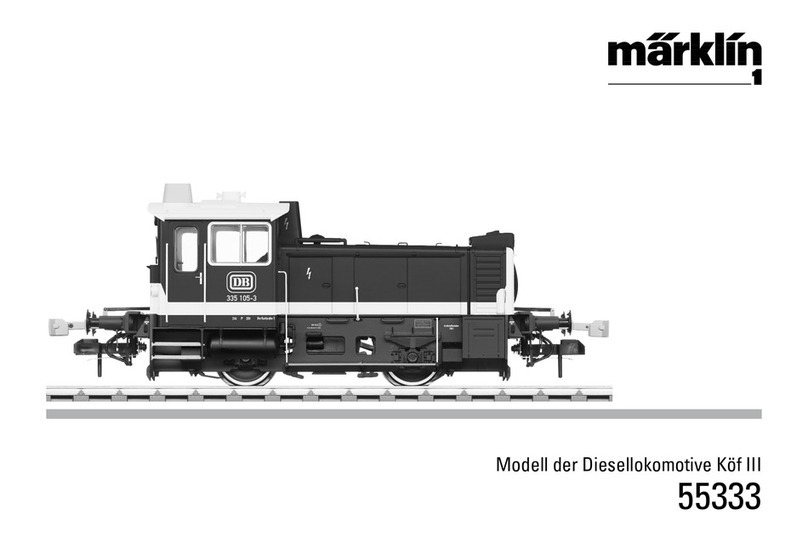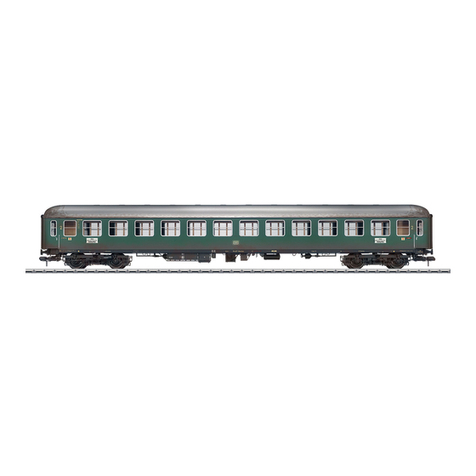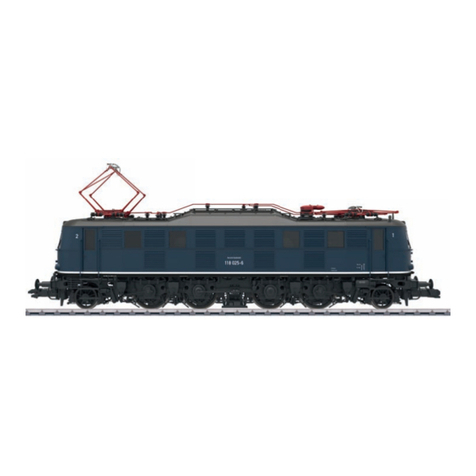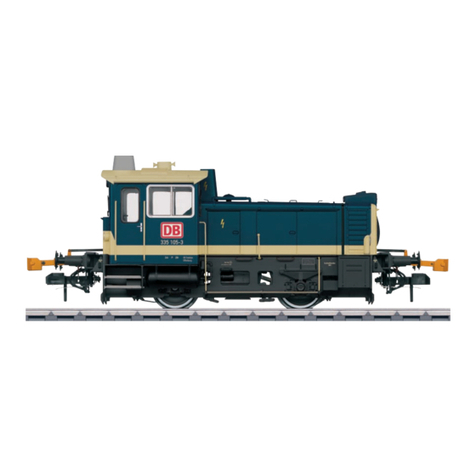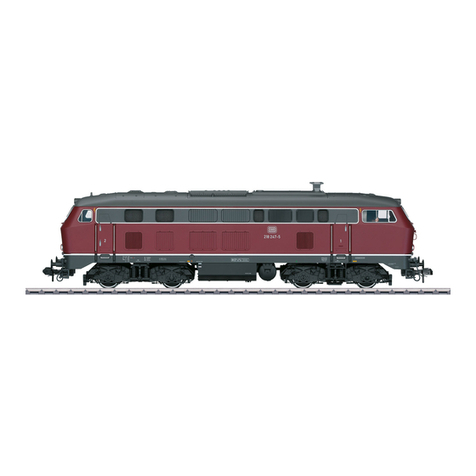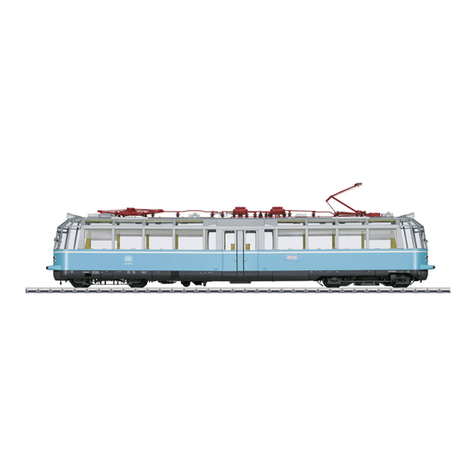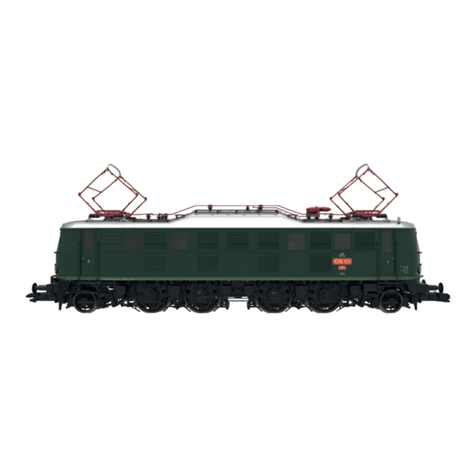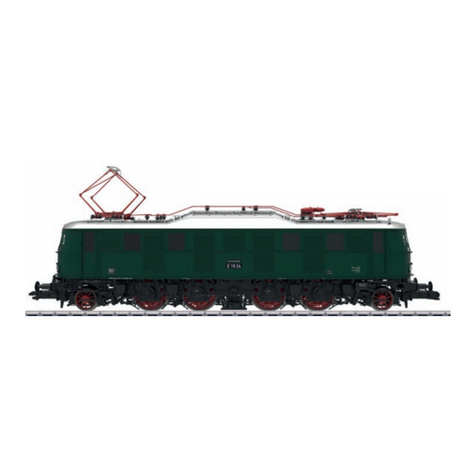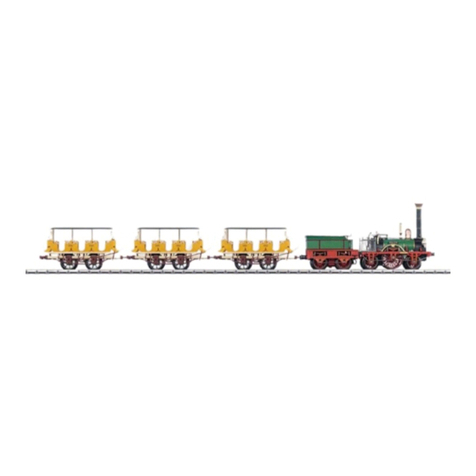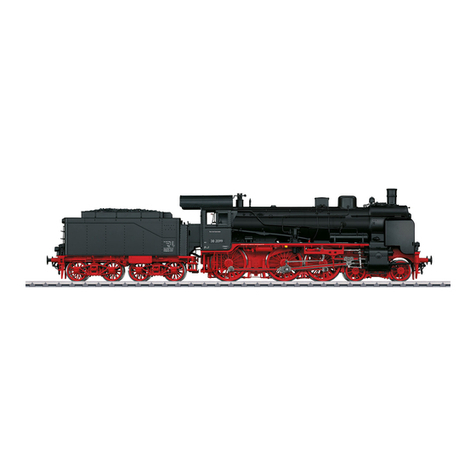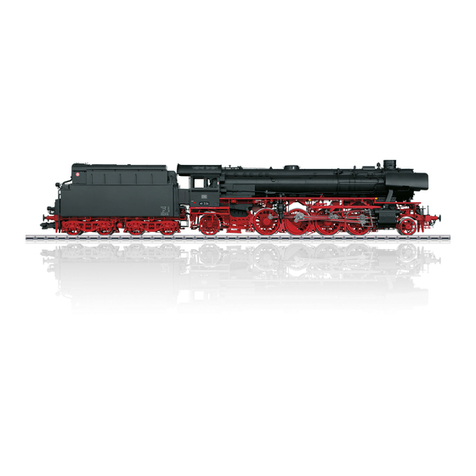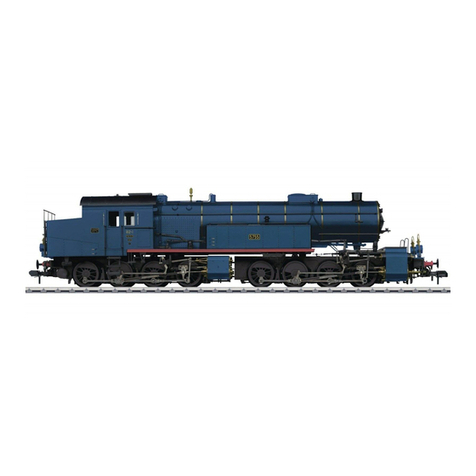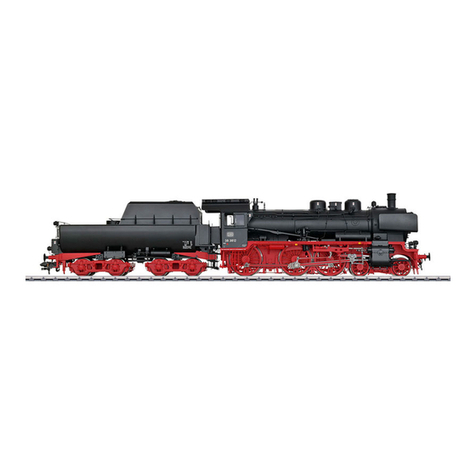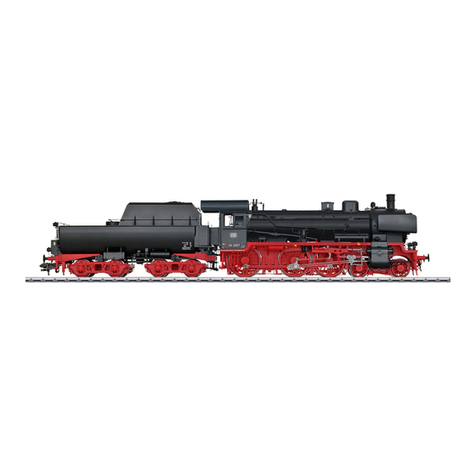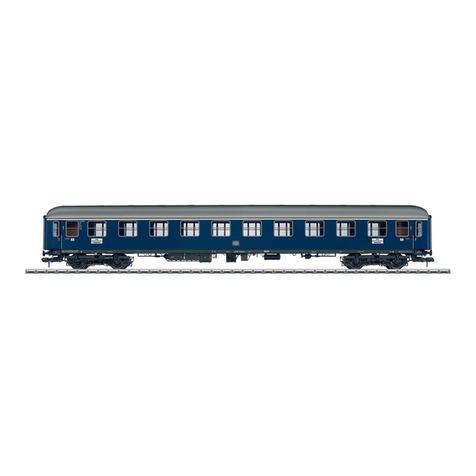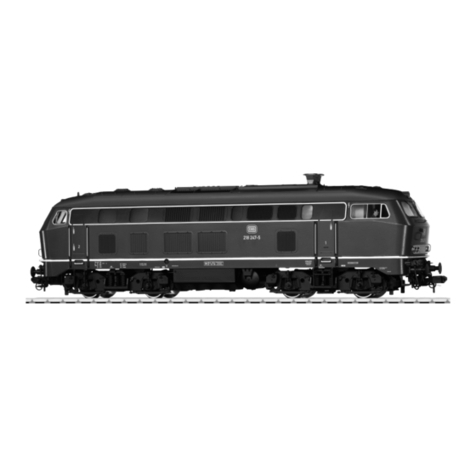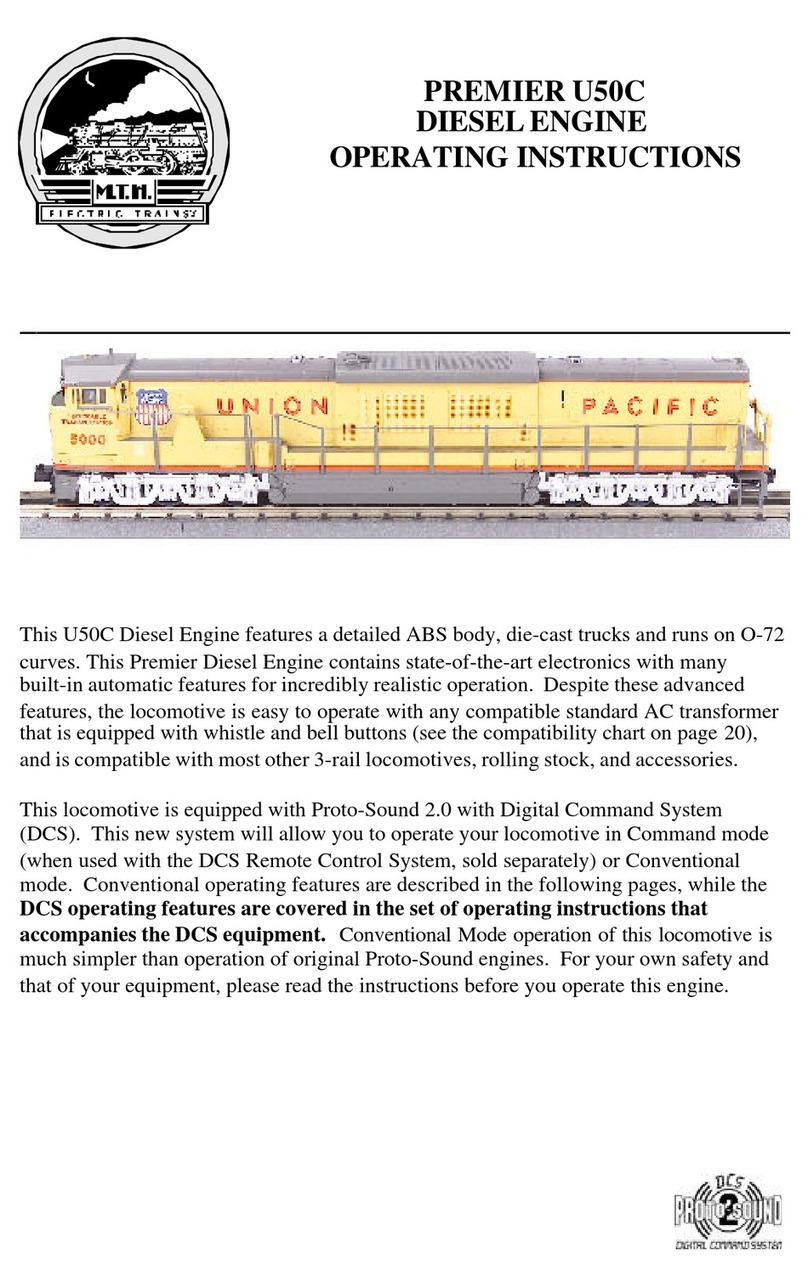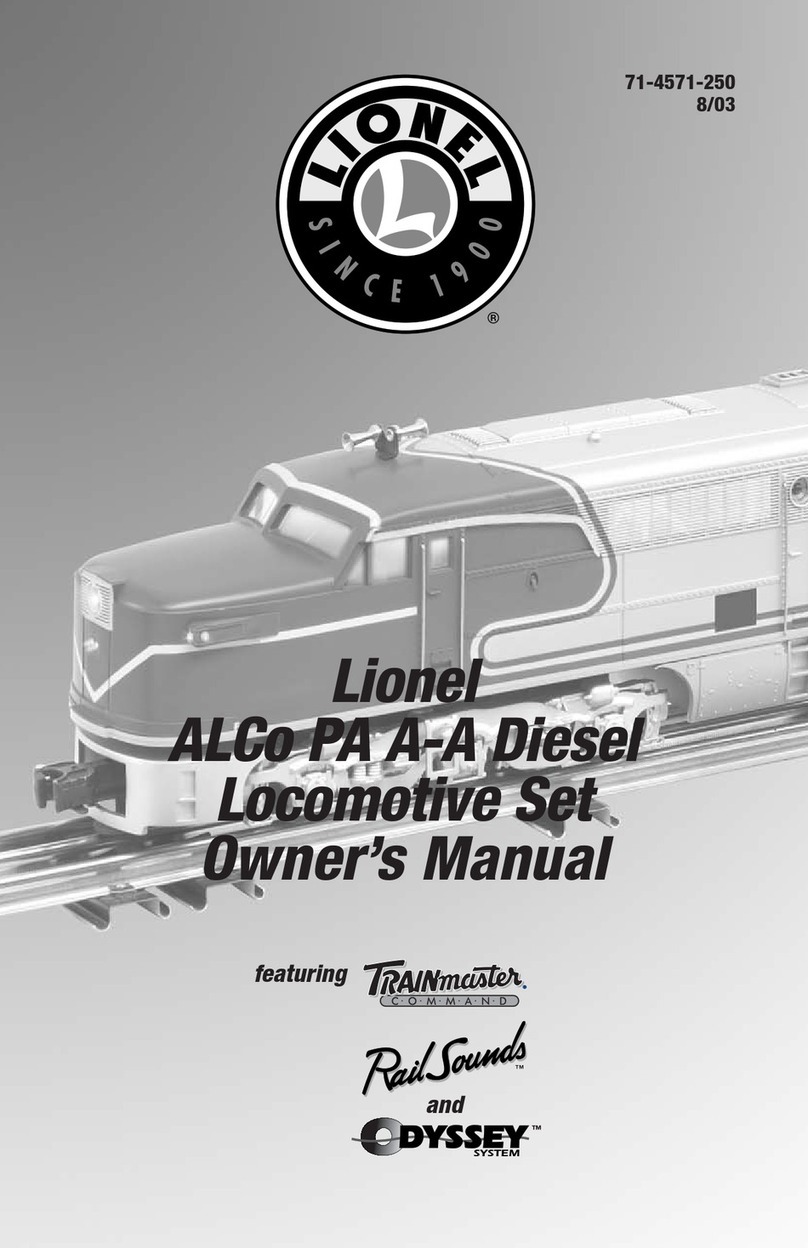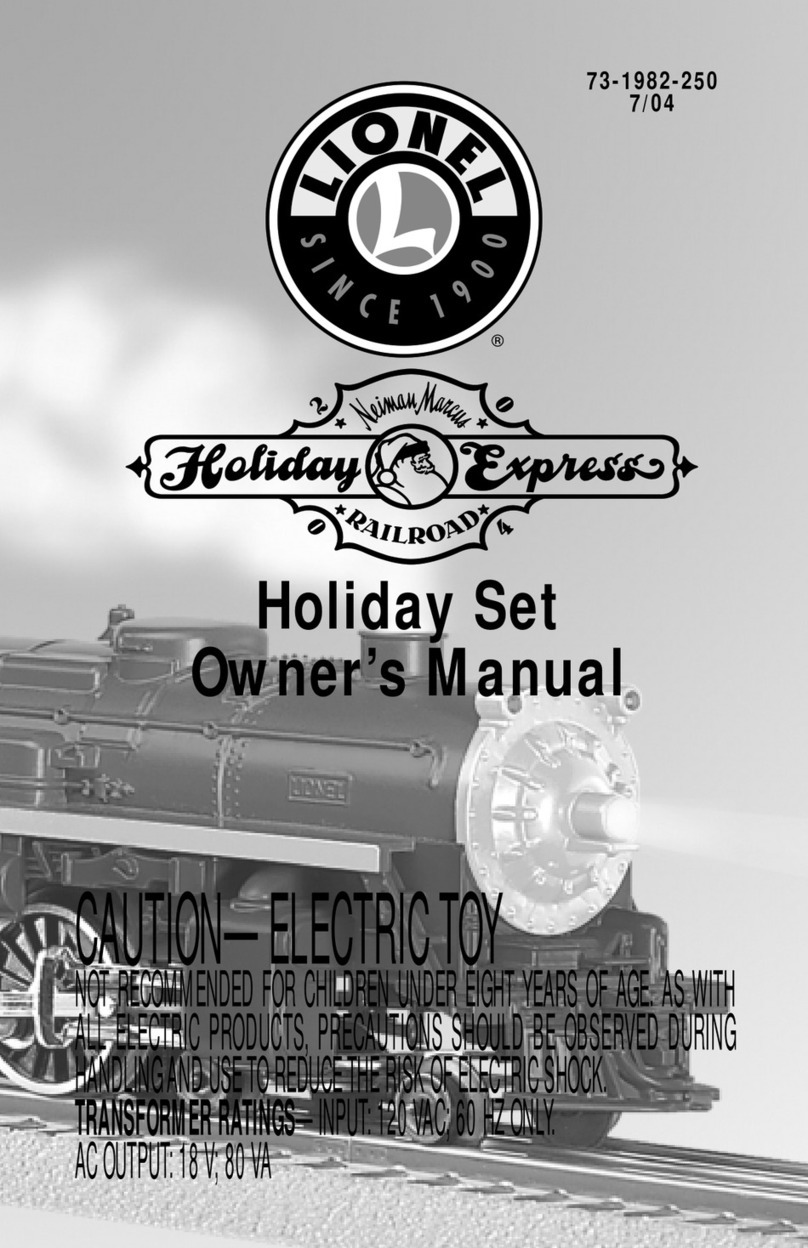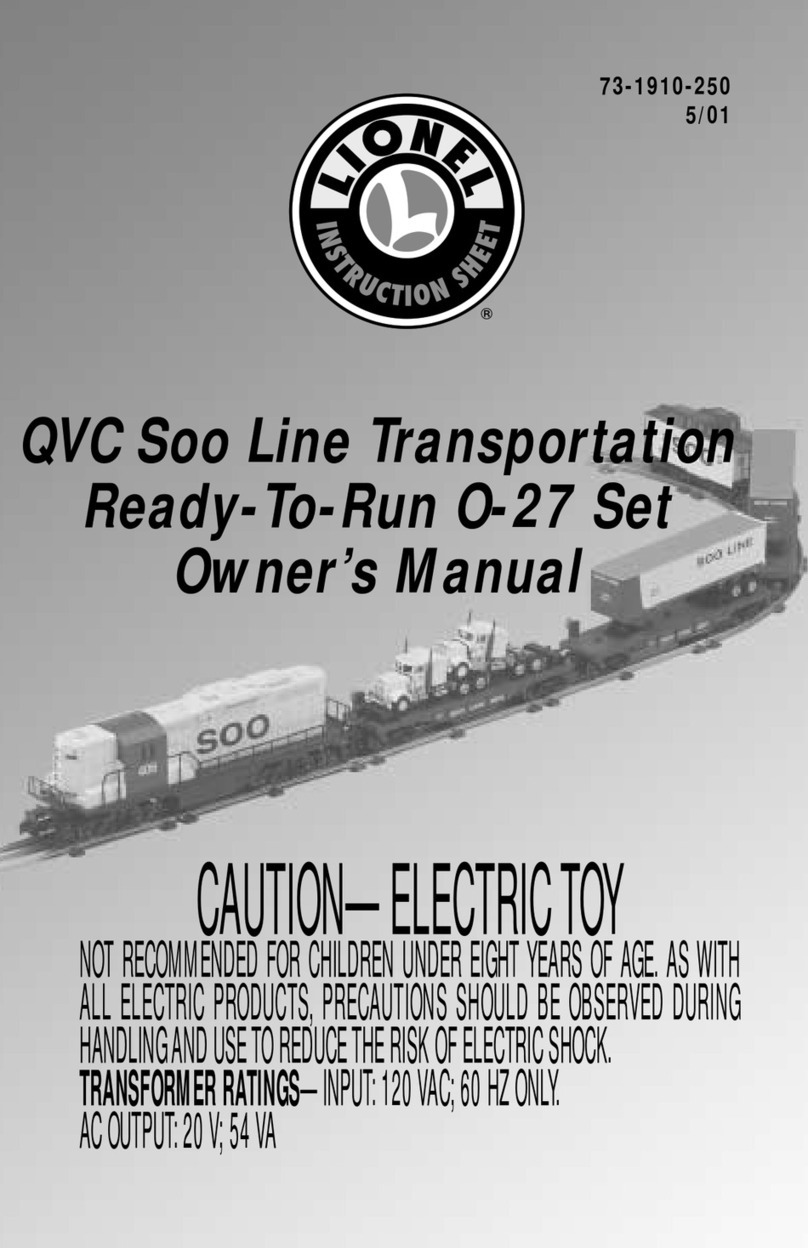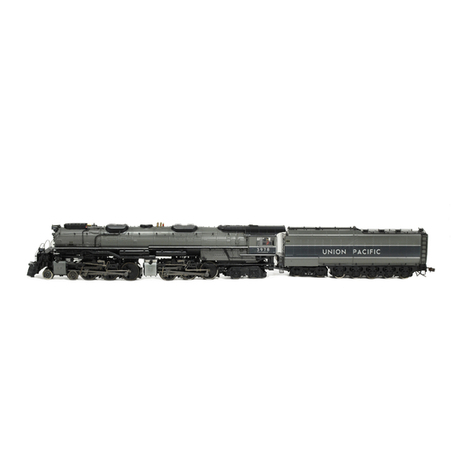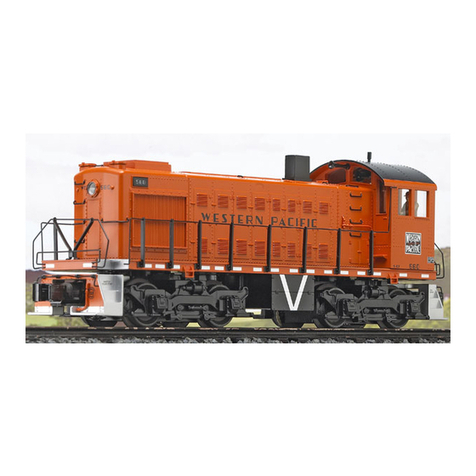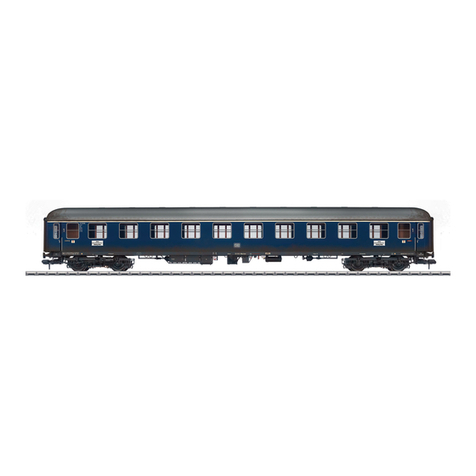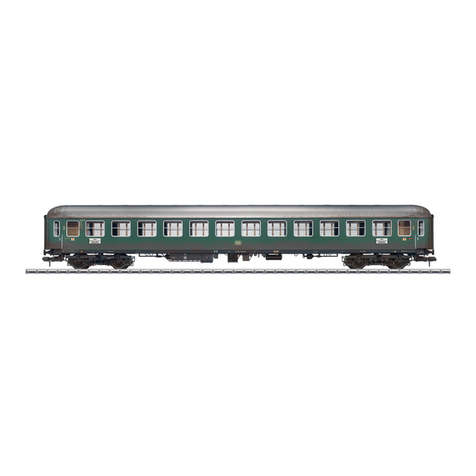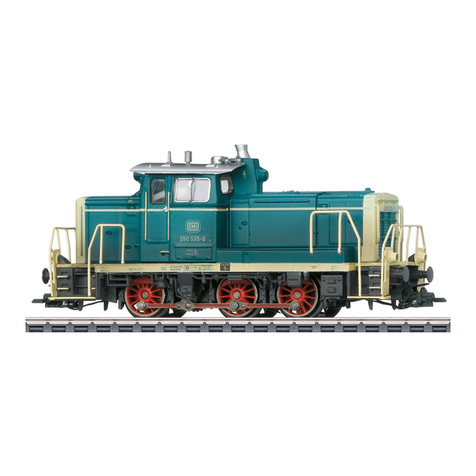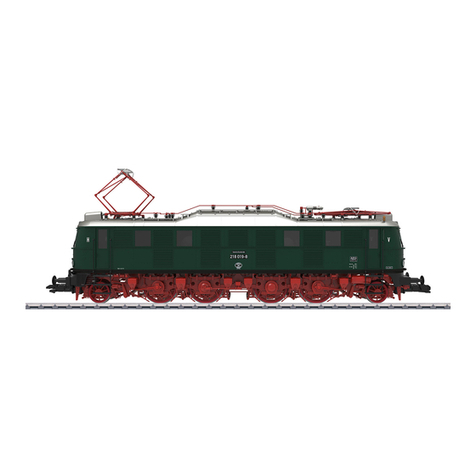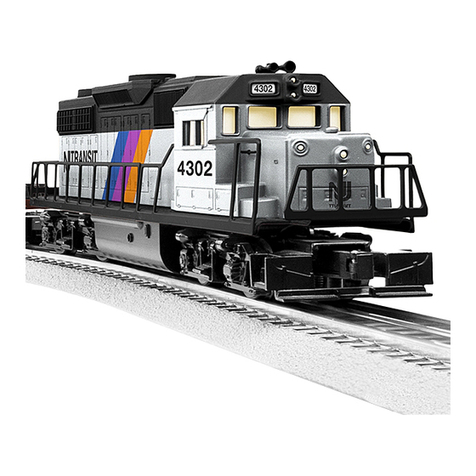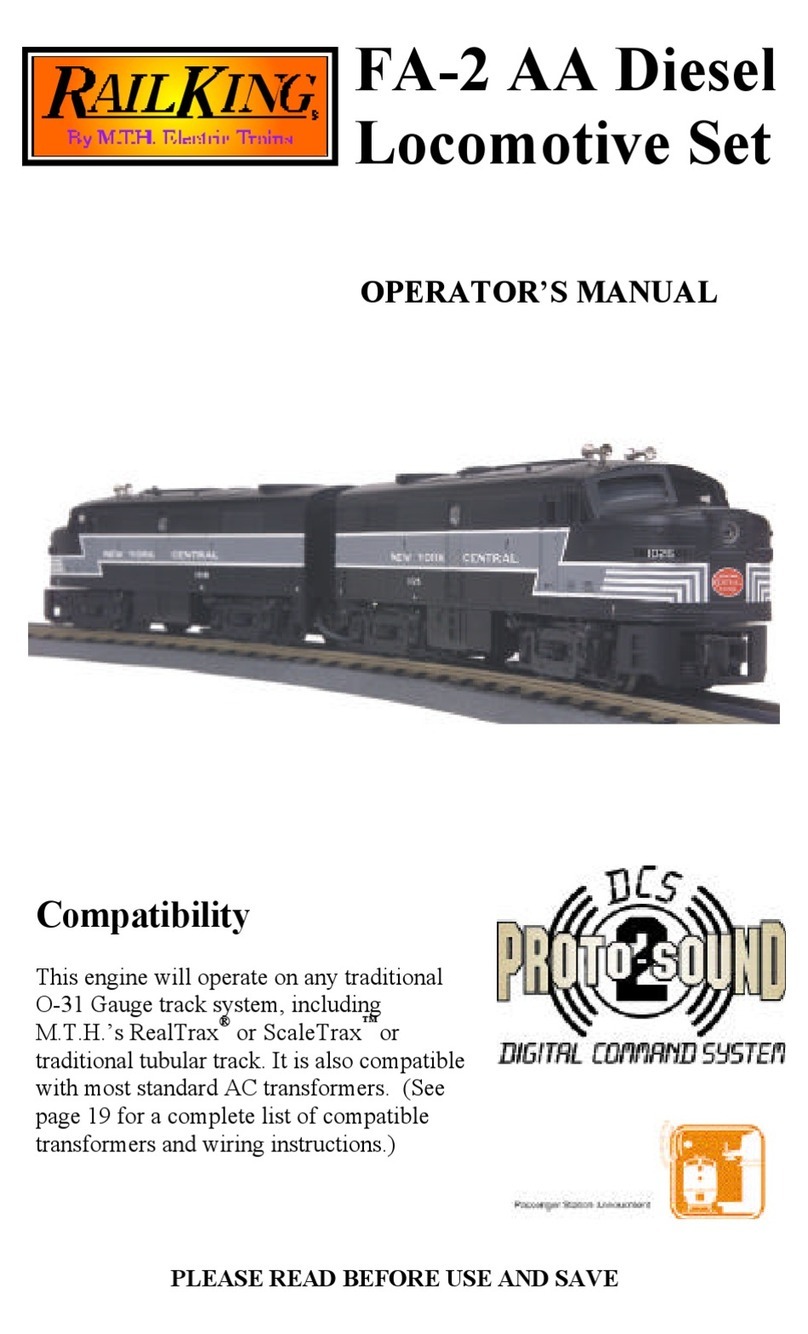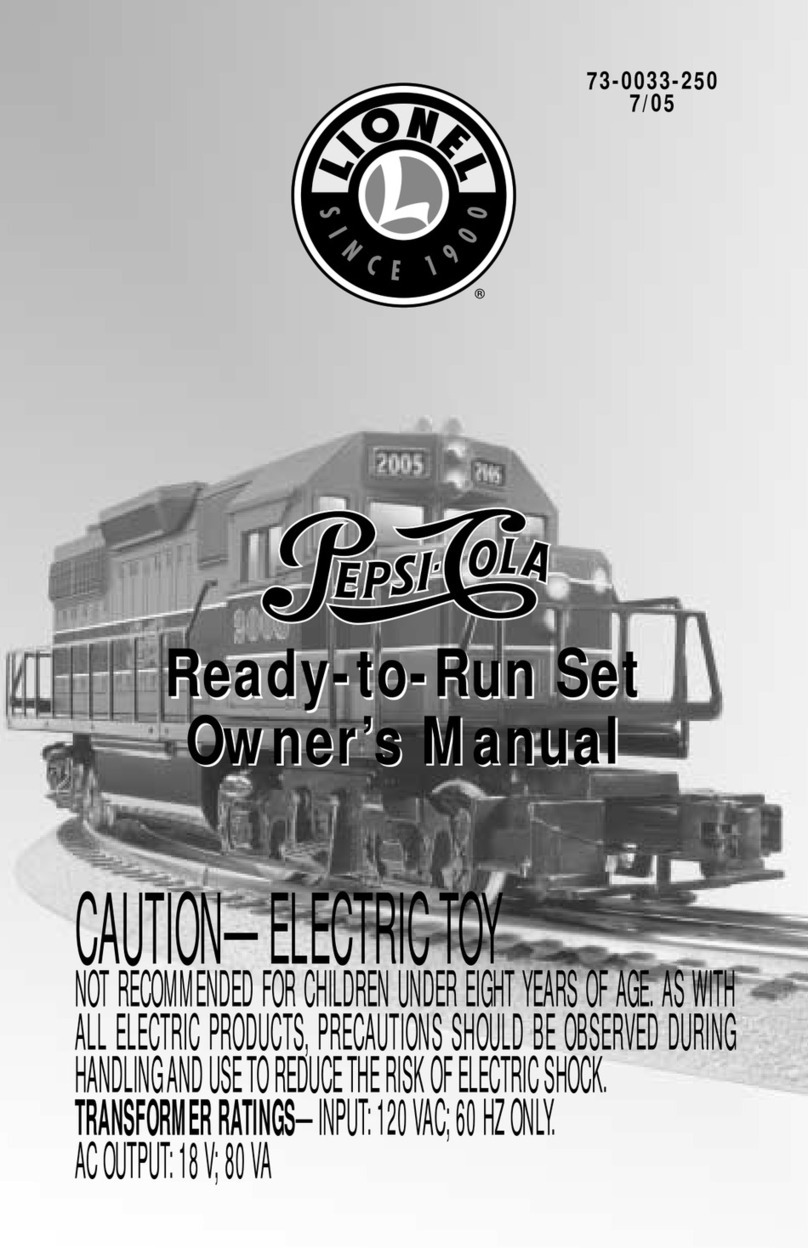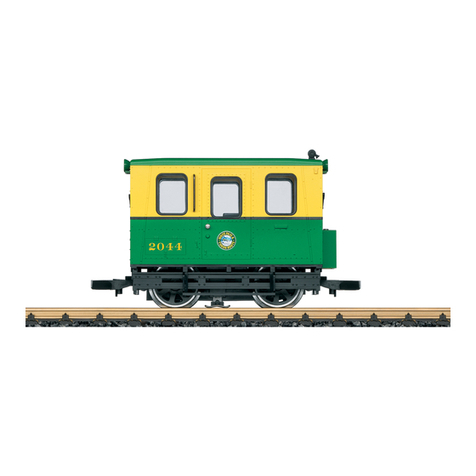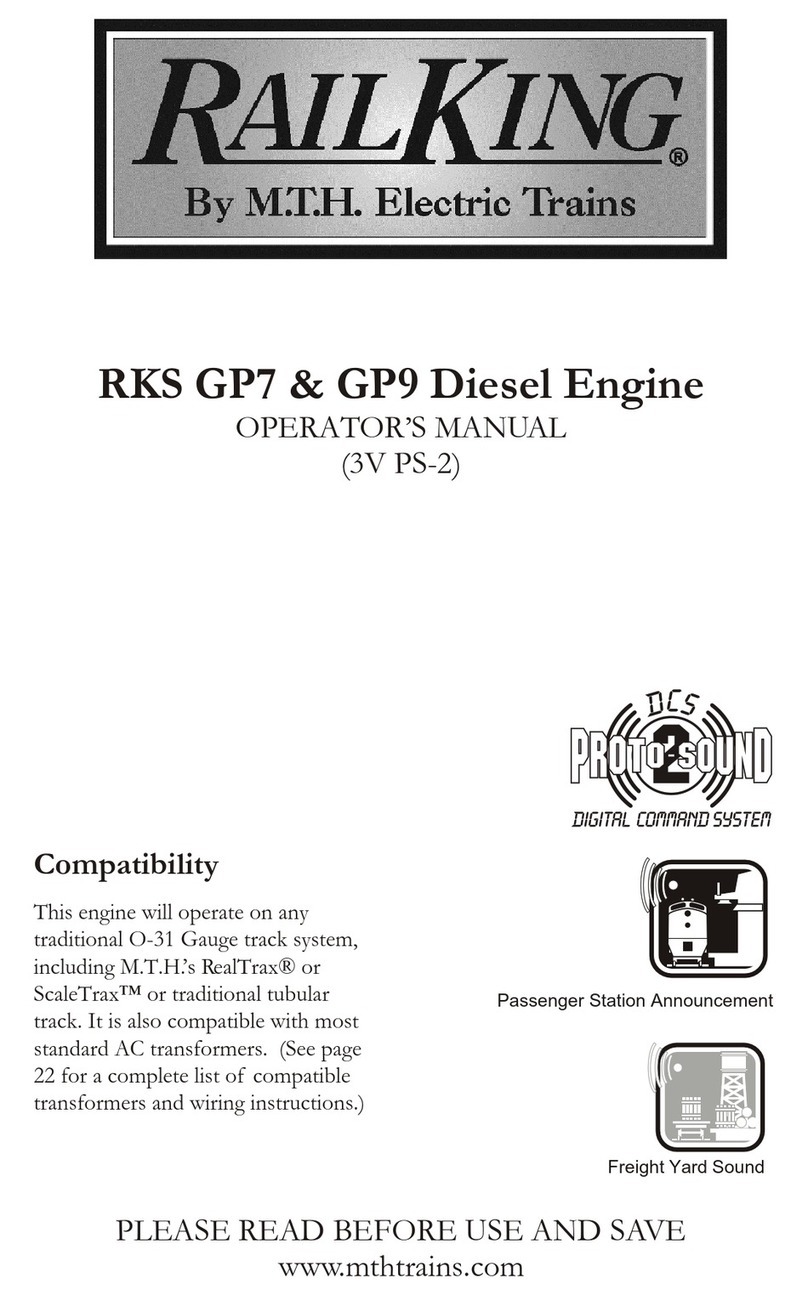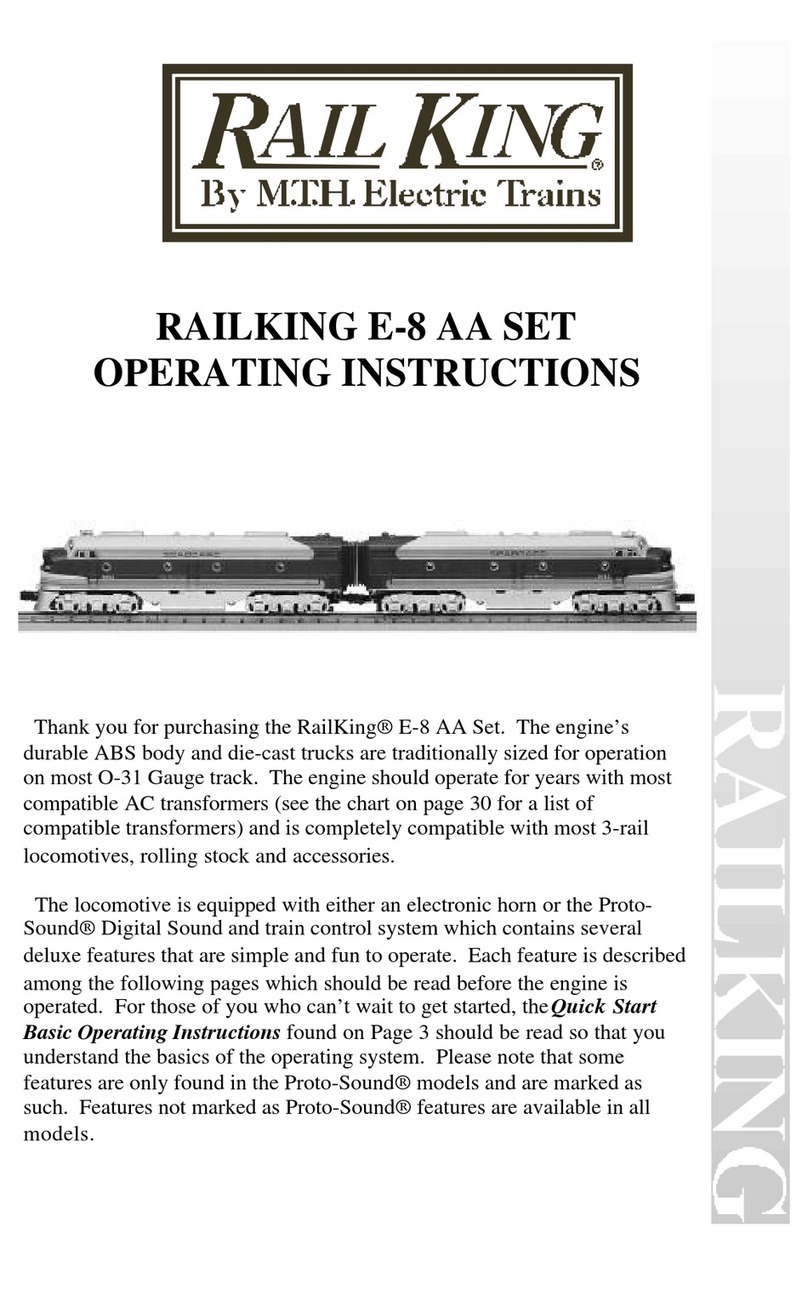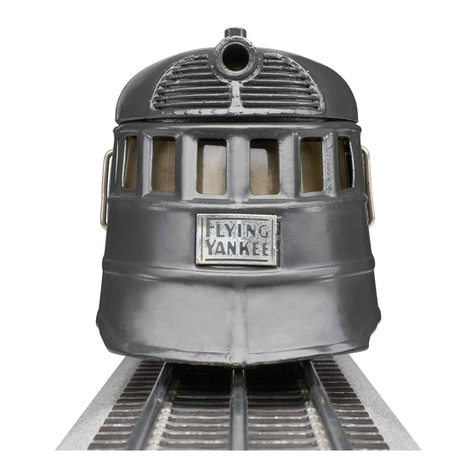
5
Vorbild • Prototype Exploitation dans le réelle • Grootbedrijf
Informations concernant la locomotive réelle
La locomotive de la série 41 1’D1’ (disposition d’essieux 141) fut conçue
dans le cadre du programme d’unification des locomotives de la DRG. Les
deux prototypes furent livrés par Schwartzkopff en 1936. Le châssis était de
conception nouvelle, la chaudière était la même que celle de la série 03, à
la différence que pour la BR 41, elle était prévue pour 20 bars. La charge par
essieu pouvait être réglée au choix sur 18 ou 20 t. La série 41 était la pre-
mière série de locomotives polyvalentes universelles. Les deux machines de
pré-série furent suivies de 364 locomotives de série légèrement améliorées
qui furent livrées jusqu’en 1941 par presque toutes les usines de locomotives
allemandes. Les locomotives, qui avec leurs 1900 ch pouvaient atteindre une
vitesse de 90 km/h, étaient utilisées dans presque tous les domaines.
Après la seconde guerre mondiale, 216 locomotives restèrent à la
DB et 116 à la DR. Ces deux compagnies ferroviaires ne pouvant se
passer de la série 41, de nombreuses machines furent pourvues d’une
nouvelle chaudière. Pour remplacer les chaudières St47K usées, la
DB conçut une chaudière haute performance entièrement soudée
avec chambre de combustion. Comparée à la chaudière à tubes longs
utilisée jusqu’alors, celle-ci présentait une plus grande surface de
chauffe à rayonnement très performante et supportait donc de plus
lourdes charges. Entre 1957 et 1961, 102 locomotives de la série 41
furent équipées dans l’atelier principal de Braunschweig de cette
nouvelle chaudière qui, avec la suppression du tablier frontal, modifiait
sensiblement l’apparence de la BR 41. Quarante de ces locomotives
transformées furent dotées en outre d’une chauffe principale au fuel.
Les machines non transformées furent en grande partie réformées dans
les années 1960, suivies jusqu’en 1971 par les machines transformées
avec grille de chauffe qui, à partir de 1968, furent immatriculées dans
la série 041. Les machines de la série 41 chauffées au fuel (désignées
comme série 042 à partir de 1968), affectées au dépôt de Rheine, restè-
rent par contre en service jusqu’en 1977, fin de la traction vapeur à la DB.
Informatie van het voorbeeld
In het kader van het eenheidslocprogramma van de DRG ontwikkelde
de locomotiefindustrie de 1’D1’-locomotief van de serie 41 voor snelle
goederentreinen. Beide prototypes werden in 1936 door Schwartzkopff
geleverd. Het onderstel was een nieuwe ontwikkeling, de ketel was
dezelfde als bij de serie 03, maar bij de BR 41 werd die voor 20 bar
gebouwd. De wielstelbelasting kon naar keuze op 18 ton of 20 ton wor-
den ingesteld. Met de serie 41 ontstond voor het eerst een universeel
inzetbare, multifunctionele locomotief. Na beide voorseriemachines
volgden 364 serielocomotieven, die lichtjes werden verbeterd en tot
1941 door nagenoeg alle Duitse locomotieffabrieken werden geleverd.
Deze locomotieven haalden 90 km/u en waren circa 1.900 pk sterk; ze
werden in vrijwel alle domeinen ingezet.
Na de Tweede Wereldoorlog bleven 216 locomotieven bij de DB en 116
bij de DR. Omdat beide staatsspoorwegen niet op de serie 41 konden
rekenen, werden vele machines met een nieuwe ketel uitgerust. Ter
vervanging van de versleten St47K-ketel ontwikkelde de DB een volle-
dig gelaste hoogrendementsketel met verbrandingskamer. In tegen-
stelling tot de voorheen gebruikte kokervormige ketel, had de nieuwe
ketel een groter aantal verwarmde stralingsoppervlakken, waardoor
die hoger kon worden belast. Tussen 1957 en 1961 kregen 102 loco-
motieven van de serie 41 deze nieuwe ketel in de reparatiewerf (AW)
Braunschweig, waardoor het uitzicht van de 41 duidelijk veranderde
gezien het frontschort nu was verdwenen. 40 van deze omgebouwde
locomotieven werden bovendien met een oliestookvoorziening uitge-
rust.
De niet-omgebouwde machines werden grotendeels in de jaren 60
buiten bedrijf gesteld, tot 1971 volgden de ombouwmachines op vaste
brandstof, die vanaf 1968 als 041 werden aangeduid. De oliegestookte
41 (vanaf 1968: 02) bleef daarentegen tot het einde van de stoomtractie
in 1977 bij de DB ingezet bij het spoorbedrijfdepot Rheine.
